Wertheim, Germany
< Start at the beginning of this series: Grand European River Cruise
This morning we docked in Wertheim, Germany – a tiny little town of 54 square miles that is squeezed into a triangle at the “Mainspitze”, where the Tauber River flows into the Main.
Wertheim Castle (Burg Wertheim) was once home to the Counts of Wertheim. Built in the 12th century, it was later expanded and then badly damaged in 1634 during the Thirty Years’ War. In the photo above there doesn’t look to be much damage, but it’s more evident at the link where their photos were taken from different vantage points. Today the castle remains are among the largest in Germany and they are perched over the city at that very strategic point. An optional excursion was available for a hike up to the castle, but we opted to visit the city instead.
It was a short walk to an adorable little train that whisked us off for our excursion. We were dropped off outside another medieval archway, which allowed access into the city. Although this 90 minute shore excursion was going to be pretty short, our first impression was that it was going to be pretty sweet as well.
Shortly after we pass through the archway, the 13th century Spitzer Turm (Pointed Tower) comes into view. Thanks to 800 years of flooding, this is Wertheim’s very own leaning tower.
“The Pointed Tower was originally built as a lookout tower, but also served as a prison for drunkards and feuding women. It seems that the medieval citizens of Wertheim liked their peace, and if two women were deemed to be shrews because of their fighting or bickering with each other, they were locked in this dark tower together for up to six weeks! They had to climb a ladder and enter the tower through the only entrance 30 feet off the ground, and then be lowered to the bottom of the tower with ropes. Food and water was also lowered to them, but they were kept “in the dark” together.” – READ MORE
One might think that living at the junction of two major rivers would be awesome, but the tower and many other old town structures have markers that show flood levels over the centuries. Our tour guide pointed out the house with the bright blue trim in the photos below. Nothing of value stays in that lower level if the river is on the rise, which happens every couple of years.
The Glasmuseum is not just a museum, but also a gift shop and a workshop with glassblowing demonstrations. There are very nice pieces on display including beautiful glass bowls, decorative pieces and ancient luxury glass. Glass blowing is one of the two things that Wertheim is known for – the other is Franconian Wine!
“Franconian wine is not just something you drink; it is a feast for all your senses. Franconian wine is also an integral part of what Franconia is. It belongs here just as harvest is part of the fall season. Franconian wine permeates life in Franconia and it is ever-present.
You feel it when you take a guided tour through a vineyard, when you hike, when you ride your bicycle alongside the Main River. It is there when you enjoy evenings filled with music, when you let the architectural beauty of the Residenz Castle in Würzburg move you, and of course you can literally taste it as a rainbow of flavors while sipping on a glass of Franconian wine. It is also there in the culinary creations of local chefs, at a wine bar, a restaurant or a wine tavern. Franconian wine also comes to life at wine festivals or in a Heckenwirtschaft.” – READ MORE
We continue our walk into the city center where you can find boutiques, restaurants, bakeries and whatever else your heart desires – maybe a glass of Franconian wine? The best pretzel in town can be purchased at the Fritz Frischmuth bakery, which is pictured below and has been handed down through thirteen generations of the same family.
The odd shape of the building below leaves plenty of room for the walkway at street level, but maximizes space on the upper floors. It’s really quite ingenious!
Construction of the Evangelical Collegiate Church, below (Evangelische Stiftskirche) started in the late 1300s. In 1448, a library was opened on the top floor with 63 donated books. It has since grown to 900 medieval manuscripts and early prints. Beneath the floor of the choir is a burial ground for the Wertheim family of counts. Its clock tower was added in 1544 and is one of the oldest in Germany. The church was very pretty and quite modest for a church of that time.
As a bonus, Viking added an optional extension to our walking tour, which offered access to a Jewish Cemetery that is gated and usually locked. The extension required a hike up quite a steep hill and on our way up we were able to catch glimpses of Wertheim Castle between the buildings.
The cemetery itself wasn’t much to look at – the stones were plain and some were tipping. What made this visit so moving was our tour guide, who told of her family’s experience first-hand. They were forced back to Germany after immigrating to Hungary and the unease (and terror) of the times were at the forefront of their minds at all times. She went on to say that growing up after WWII, the atrocities were swept under the rug and that particular part of their history wasn’t mentioned in classrooms. She was much older when she learned of her country’s sorted past, and she was appalled that this was the first she was hearing of it.
After going through many emotions – mostly guilt – she decided that guilt should not be inherited. Her way of dealing with it is to tell the stories. Bring it all out into the open in hopes that this particular part of history will never repeat itself.
Established in 1406 and in use until the 20th century, this cemetery of the former Jewish community is one of the oldest in Germany. It is a Jewish custom to place a pebble on a headstone to commemorate your visit and to show respect for those buried there, and so we did.
After such a moving visit, the little green and yellow train above took us back to our ship. Shortly after lunch we said goodbye to a number of our shipmates who had signed up for a bicycle ride along the Main River. We would sail down the river and pick them up in Freudenberg – about 13 miles away.
In total we went through 68 locks on our Grand European River Cruise and at the one pictured below I finally got some nice photos of our approach. Some locks are automated, and we were told that personnel in the manned locks are also responsible for the ones that aren’t. What a feat of engineering to rig all of these locks, and our trip went off without a hitch.
Although some locks can get quite congested, this one looks wide open except for a small boat who will be sharing our decent. It takes a while to adjust the water level and I’m amazed that we hardly felt the movement of the boat as we were raised or lowered. We found ourselves watching a seam in the wall, a ladder, or some other point of interest to even tell that we were moving.
I remember waking up in the middle of one of our first nights on the cruise to creaking and groaning coming from outside our balcony. I turned on the outside light to see a wall – the wet wall of the lock! I’m not gonna lie – it freaked me out a bit because it really seemed like we were close to that wall. After several more days of the process, it all became routine and it was no big deal.
The last photo below shows another ship pretty close beside us as we went through another lock together. That was a more time-consuming one, since we had to squeeze in slowly, wait for the water to level out and then squeeze out and proceed on down the river. I’m sure my “squeezing” is exaggerated, but it “seemed like” we could reach out and shake hands with the passengers on the other boat. Of course we didn’t test that theory, but we did wish each other safe travels.
More lovely churches and castles are on hand for our viewing pleasure as we continue our trip to Freudenberg. Just when the scenery became more mundane, we were called inside for German Teatime, where German pastries and a cup of decaf helped us to relax and enjoy a little down time.
We eventually caught up to the cyclists, who paused to wave hello as we passed beneath them! A little further downriver we stopped to gather them up. We were told by several folks on the excursion who were expecting a leisurely stroll, that it was more of a race – to the next watering hole – to taste another German beer! They all had a great time and we heard lots of stories of their antics! With them safely on board, everyone relaxed and enjoyed the rest of our evening.
What an absolutely fabulous day, and I’m sure you haven’t heard me say that before! Tomorrow we head out on the Middle Rhine to Koblenz, Germany and the Marksburg Castle.
Up next: Cruising the Middle Rhine
Happy trails,
Barb

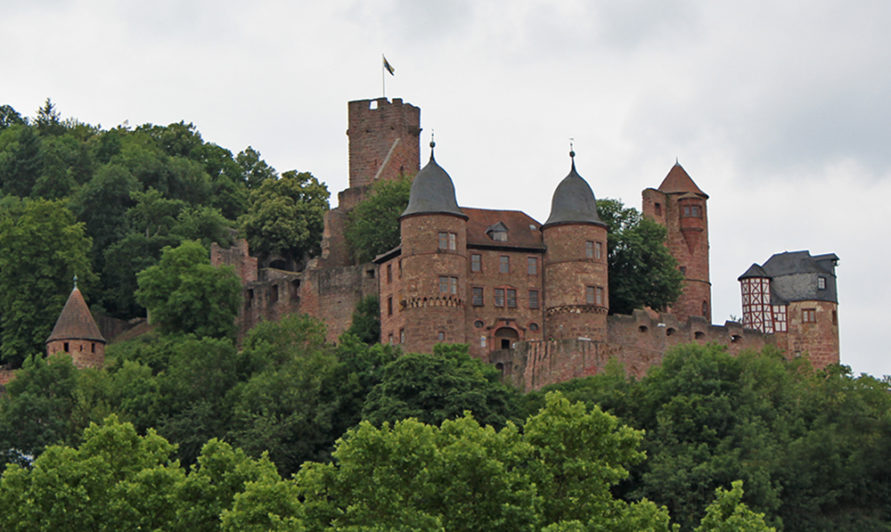
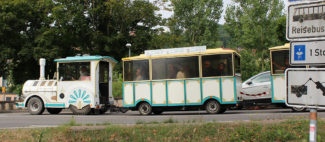

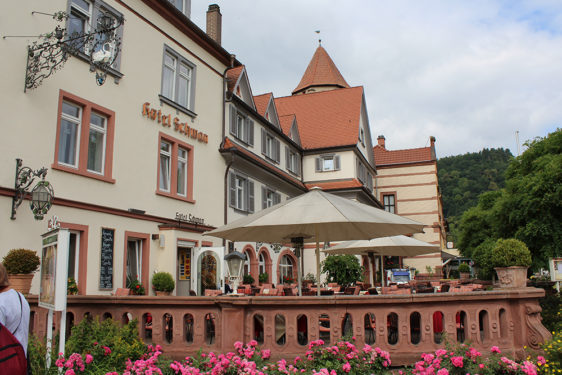
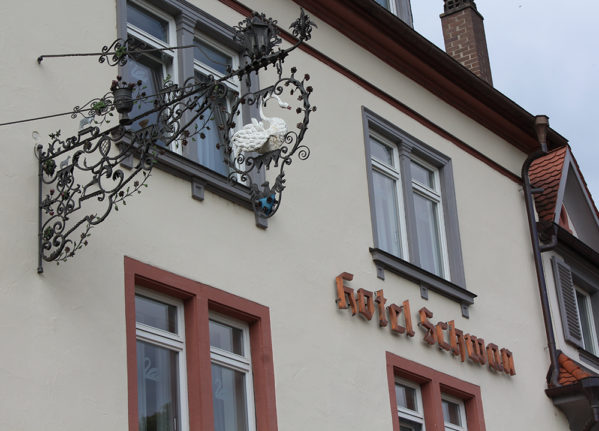
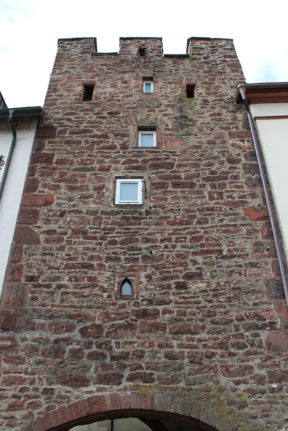


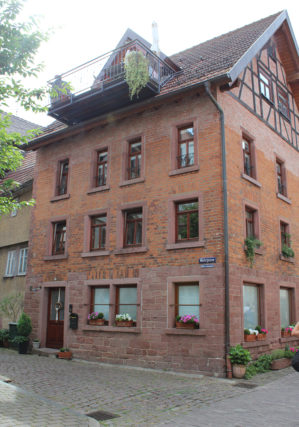
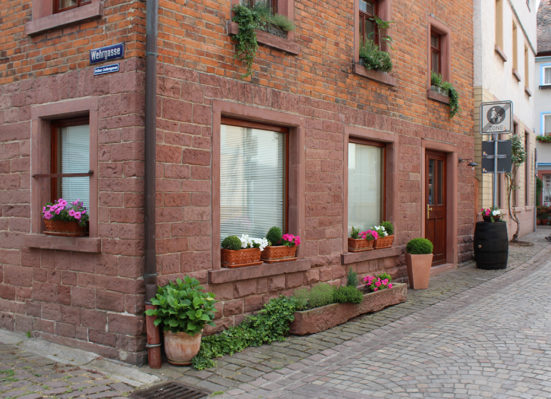
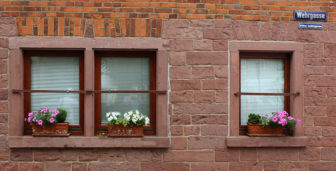

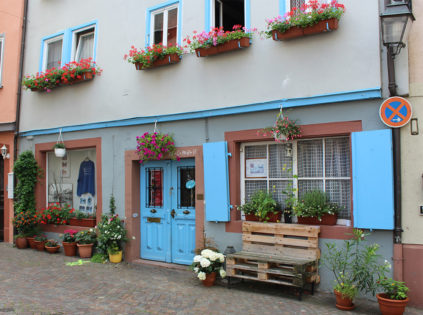
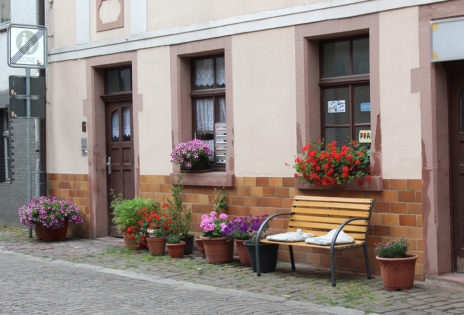
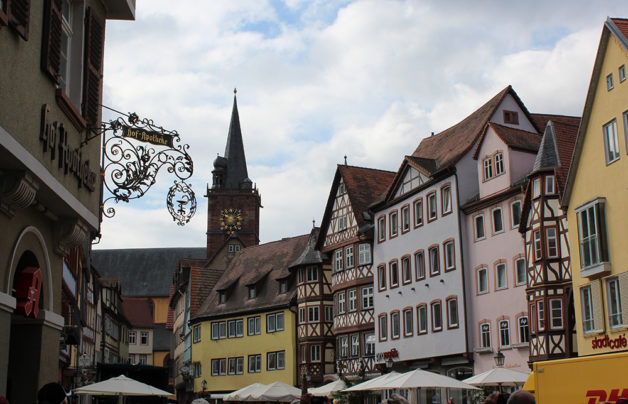
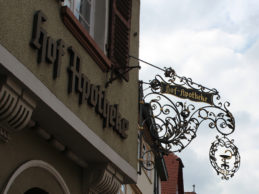
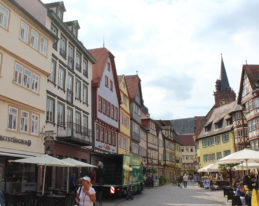


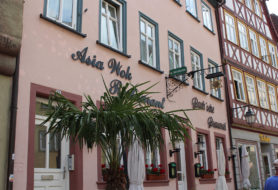

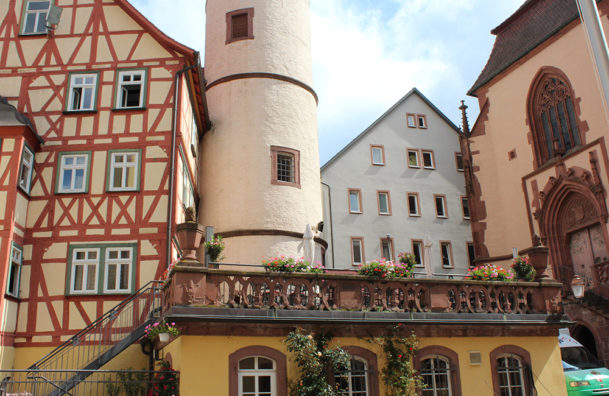

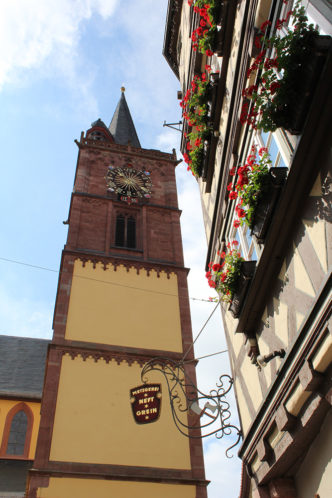
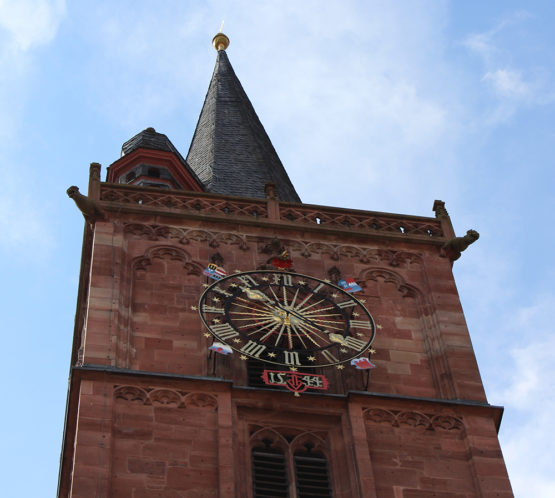

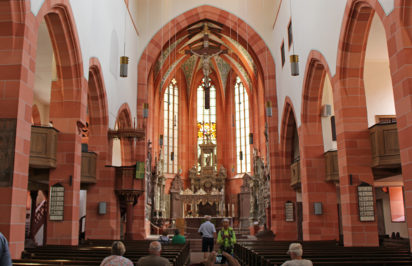
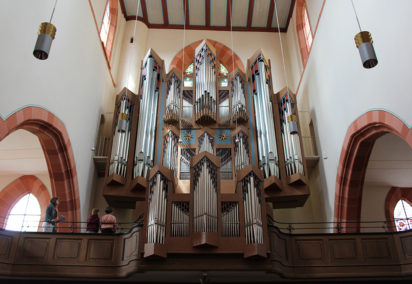

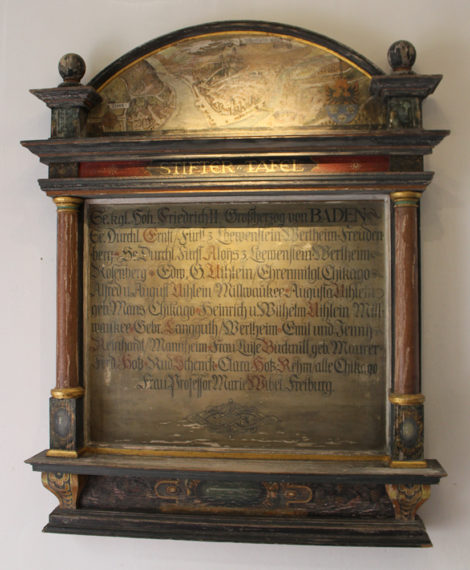

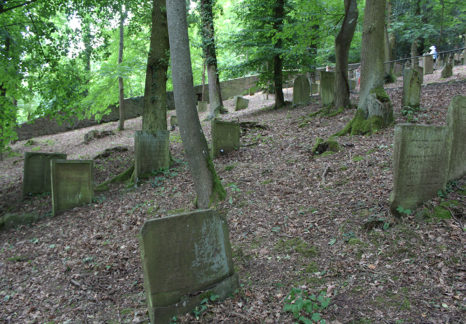
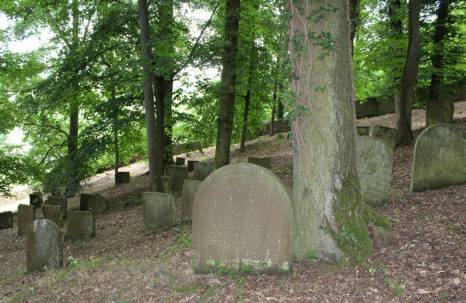
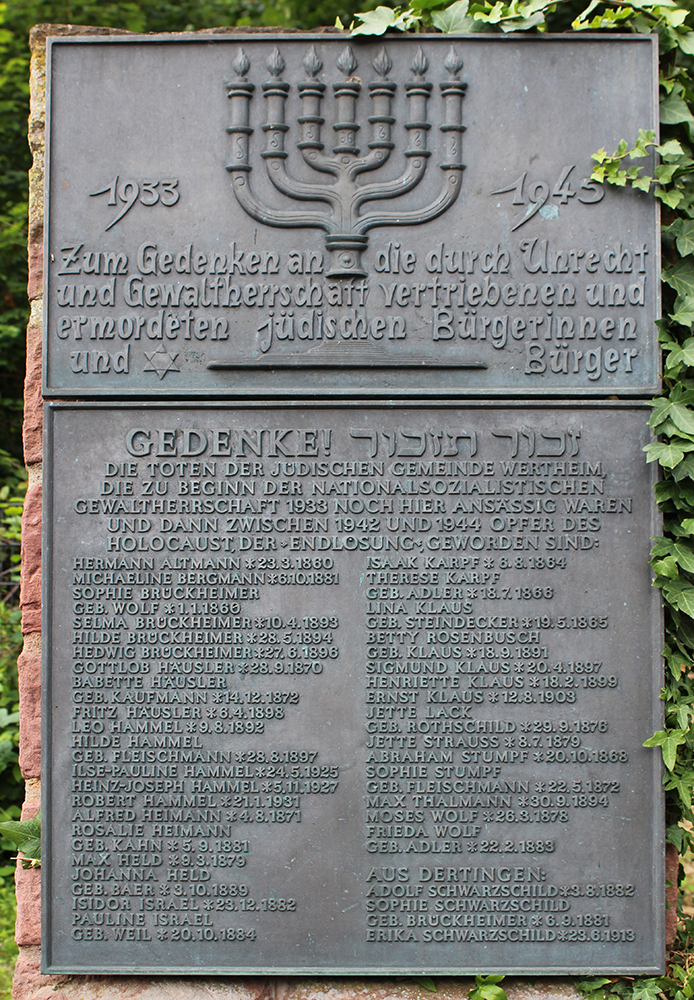
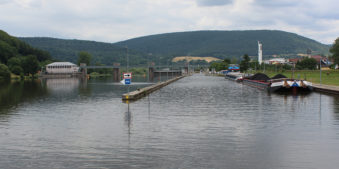
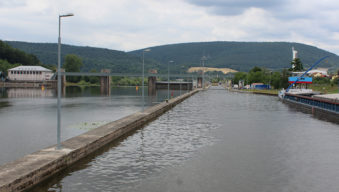
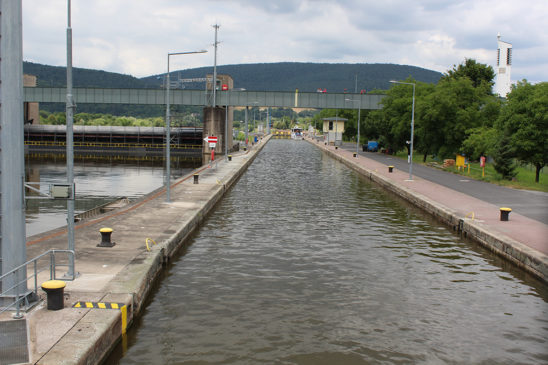
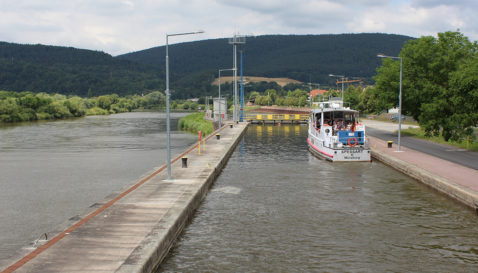
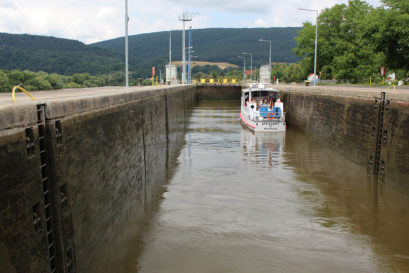
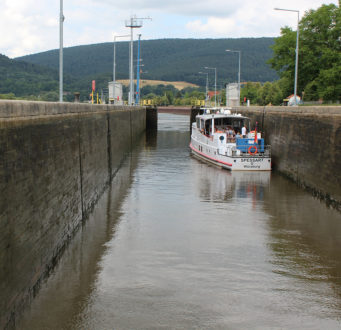


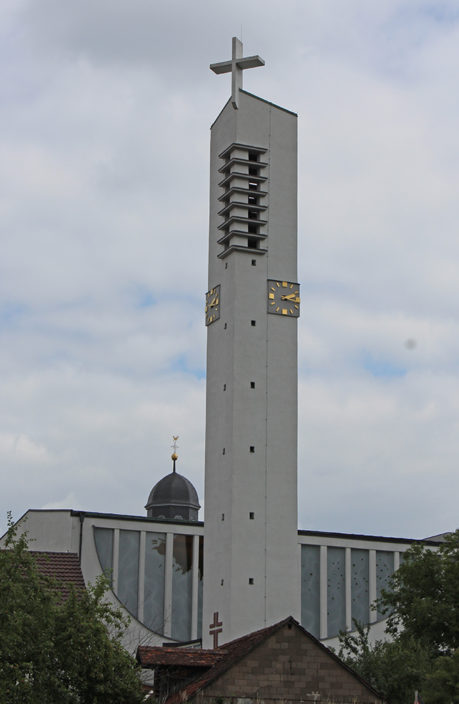
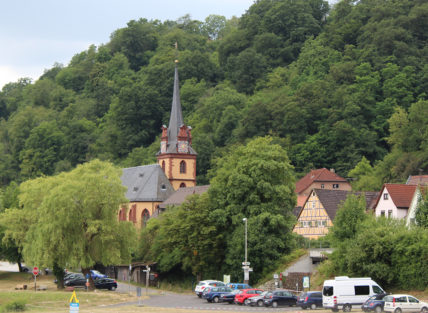








Comments are closed here.